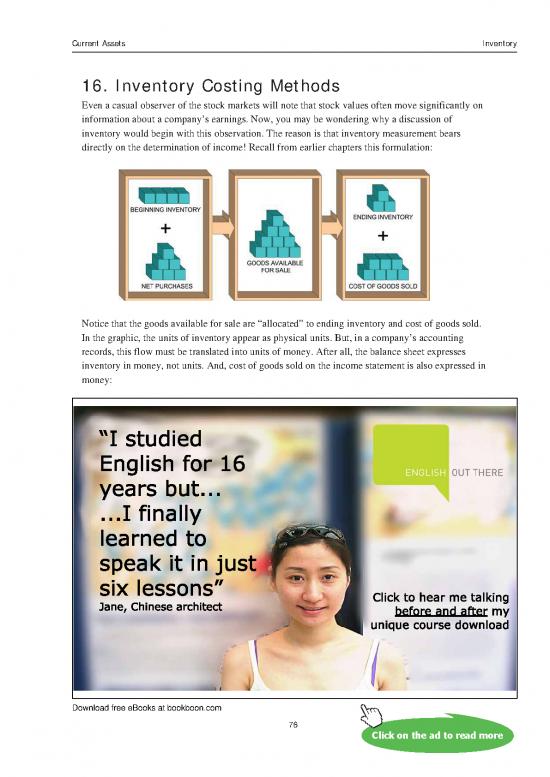Top 4 Inventory Costing Methods and How They Work

$15, because they were the last items bought, so they are the first items sold. If your inventory items are perishable or have a limited shelf life, the FIFO method may be the best option. If your goods are non-perishable or have a long shelf life, the LIFO method may be more appropriate. If you’re a small business with many customized and unique items, you might even look into the specific identification method. Choosing an inventory cost accounting method is an important decision that will impact a company in the long run.
Real-World Scenario to Compare Inventory Costing Methods
Cost of goods sold and inventory costs are two important accounting terms that relate to the expenses involved in producing and selling goods. This method assumes that the first items purchased or produced are the first ones sold. It assigns the costs of the oldest inventory to COGS and considers the latest inventory as remaining in stock. FIFO is often used when there is a presumption of selling the oldest items first.
- When replenishing inventory, many of the additional costs are often overlooked or dismissed.
- It may be wise to do adjustments periodically (every couple years or so) to all average costs to bring them closer to an average that more accurately reflects recent costs.
- At the end of the month, you have 50 left in your inventory, which means $600 worth of T-shirts.
- With each inventory costing method example — except specific identification — you’ll notice that the sum of the cost of goods sold and the ending inventory is equal to the dollar amount from the net purchases ($160).
- By selling the cheapest items first, you’re left with more expensive inventory, which could result in higher reported profits.
- Although we endeavor to provide accurate and timely information, there can be no guarantee that such information is accurate as of the date it is received or that it will continue to be accurate in the future.
Specific identification method
Before we get into the different inventory costing methods, it’s crucial to understand the difference between cost of goods sold and inventory. When it comes to inventory costing methods, there are 4 main formulas that companies will typically use. The weighted-average cost method (sometimes referred to as the average cost method) requires a calculation of the average cost of all units of each particular inventory items. As a caveat relating to the average cost method, note that a new average cost must be calculated after every change in inventory to reassess the per-unit weighted-average value of the goods.
Weighted Average Cost

Whichever method is used, it is important to note that the inventory method must be clearly communicated in the financial statements and related notes. LIFO companies frequently augment their reports with supplemental data about what inventory cost would be if FIFO were used instead. This does not mean that changes cannot occur; however, changes should only be made if financial reporting is deemed to be improved.
Inventory is a current asset that refers to the goods for sale or unsold goods. Inventory valuation is the monetary amount that corresponds with the goods in the inventory at the end of any given accounting period. While this may seem appealing at first, it can also add to your inventory costs since your carrying costs will increase.
See profit at a glance
Despite all these factors and challenges, there are measures you can take to keep your inventory costs low. Additionally, geopolitical issues and other factors could also result in unexpected demand changes, which will subsequently affect your inventory costs. For example, if you buy inventory turbotax rejecting oregon return without planning how much stock you need, you could risk buying inventory you don’t actually need. Carrying costs can vary based on the type of product you sell and the costs of storage. This type of costs can include fees such as taxes, insurance, labor wages, and warehouse rent.
Specific identification provides the most precise matching of costs with revenues, but depending on the size of your inventory, can be more complex and time-consuming to implement. FIFO is also ideal for inflationary environments, when prices are rising, as it results in lower COGS and higher reported profits. FIFO is best used when you want to keep pace with the actual physical flow of goods. It’s suitable for industries where products have a short shelf life or when you want to align COGS with the actual order of inventory acquisition. Still, it’s always important to check the exact impacts of LIFO with your accountant or tax advisor.
FitSmallBusiness tax and accounting analyst Tim Yoder says the retail inventory method works best if you have a standard markup, within broad product lines. “If your markups vary widely among products, then your estimate won’t be very accurate,” says Tim. Accountants usually adopt the FIFO, LIFO, or Weighted-Average cost flow assumption. The actual physical flow of the inventory may or may not bear a resemblance to the adopted cost flow assumption.
These materials were downloaded from PwC’s Viewpoint (viewpoint.pwc.com) under license. Although we endeavor to provide accurate and timely information, there can be no guarantee that such information is accurate as of the date it is received or that it will continue to be accurate in the future. No one should act upon such information without appropriate professional advice after a thorough examination of the particular situation. Dual preparers should carefully assess all differences to prepare a model that is efficient to maintain, most representative of their inventory values and compliant with all applicable requirements under both GAAPs. IFRS Standards define an onerous contract as one in which the unavoidable costs of meeting the obligations under the contract exceed the economic benefits expected to be received. Unavoidable costs are the lower of the costs of fulfilling the contract and any compensation or penalties from the failure to fulfill it.


